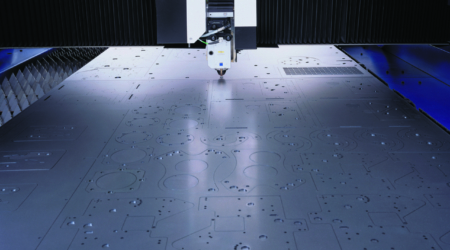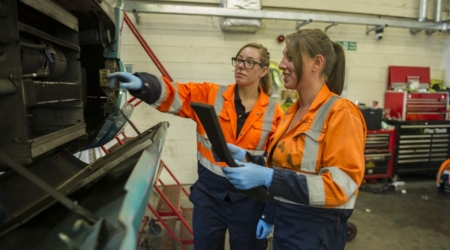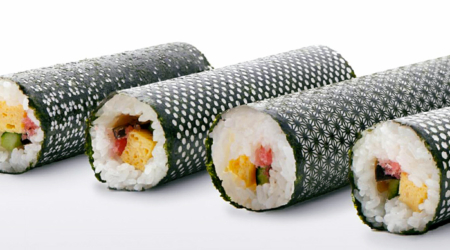Laser cutting has a staggering range of applications across a variety of modern industry sectors. Its popularity and reputation for quality rely on the speed, cleaner cut, and high-precision of laser capability. Yet not only are lasers faster and more accurate than other methods, they are also much safer. For instance, laser cutting is executed in a tight light box, meaning hands and superfluous parts are always kept away from accidental harm (i.e., no blade is left freely running to cut material). Laser cutting is also cheaper, it involves less wastage of materials, incurs fewer maintenance expenses, and is versatile enough to work with a large array of different materials.
The quality, safety, and cost-effectiveness of laser cutting services make it a highly popular application for a broad number of industries. Here’s a brief look at just a few sectors that now heavily depend on this technology:
Aerospace
This vast industry is one of the greatest utilisers of precision engineering, reliant on laser cut metal due to the exactness and versatility needed for mechanical devices and construction. Incredible small parts must be cut and microscopic holes need to be drilled. Heavy-duty aluminum alloys and various rare metals are often required to be cut with a low heat-affect zone and a flawless finish. Only lasers can satisfy these needs.
Apart from aeroplane production, this industry also uses laser cutting for everything from combustor liners, to metal detectors, trolleys, conveyors, and stillages. Laser drilling and engraving often work together in this industry to produce unmatchable results.
Automotive
As with aerospace, this industry couldn’t exist without small and intricate parts/components (e.g., antenna apertures) which can only be engineered reliably through laser cutting methods.
Hydroformed parts (metal manipulated into 3D forms) are key for most automobile manufacturers today, especially on high-end, specialist, or exotic vehicles (e.g., engine exhaust systems). Only laser cutting can produce these shapes cleanly, smoothly and consistently without error.
However, lasers don’t just excel at cutting metal – they can be used in other processes, such as severing cloth for airbags. Indeed, when used on airbags, laser cutting melts the edges of fabric almost instantly, meaning there is no danger of frayed material left behind.
Electronics
Laser technology enjoys widespread utility in this field due to its unique ability to cut and perforate delicate parts and tiny components. With each year that passes, the electronic sector demands products which are increasingly smaller, meaning conventional processes for cutting simply cannot be used anymore – only ultra-precise laser tools are up to the job. One popular use in this industry is the production of microSD cards and flexible / multi-layer circuit boards. Because laser machines are so accurate, they require very little marginal space to cut around any components. This allows circuit boards to be manufactured in the smallest dimensions possible.
Furthermore, lasers also play a crucial role for the cutting of finished electronic products, such the plastic or highly polished metal cases for mobile phones, laptops, and personal computers.
Medical
Not only does this industry produce parts, mechanisms, and devices which are incredibly small – lives literally depend on their quality, so consistency and precision must be of the highest standard possible. Indeed, the creation of medical devices is one of the most frequent uses of laser cut material, for example, high-grade stents used to relieve kidney stone pain and birth control measures are routinely cut by laser.
Lasers are also required to produce a variety of hospital supplies, such as stainless steel bed frames and trolleys, as well as aluminum machinery parts and brackets, valve framers, bone reamers, vascular clips, and flexible shafts.
As with the aerospace industry, the medical sector often utilises exotic metals that are difficult to cut. Titanium is one perfect example: this metal is biocompatible, light, non-corrosive, and fuses successfully with bone. Such properties make it a staple material used in surgical tools, as well as orthopaedic plates, pins, and rods. However, its durability also makes it very hard to process except at low speeds and heats, incurring extensive tool wear. Laser cutting provides a viable and cheaper alternative, able to cut material down to an impressive 2mm thickness and with minimal distortion.
Perhaps the most important use for laser cutting technology is for surgery on human skin, bones and organs. Since lasers cut so precisely, swiftly, and cleanly, involving only minor heat damage to surrounding tissue, laser instruments are often preferred over traditional tools (e.g., scalpels). Today many eye surgery processes utterly depend on the superior quality of lasers.
Overall, whether manufacturing with metals, plastics, or fabric, the high-quality and precision offered by laser technology is second to none. The sheer range of uses has made it crucial for the advances in aerospace, electronics, automobiles and medicine that we all enjoy today. No wonder laser cutting technology and services now appear in almost every sector of the modern economy!









